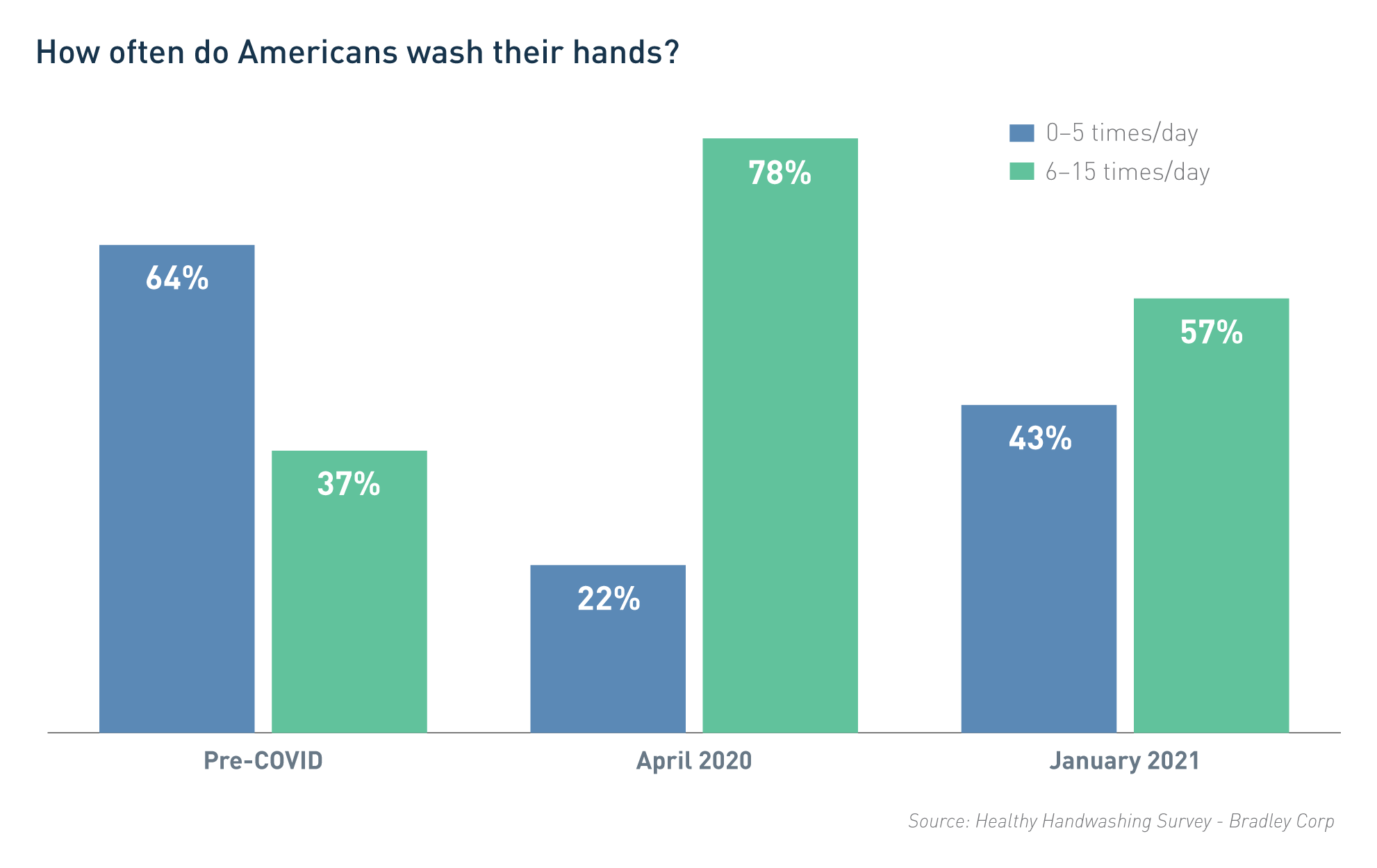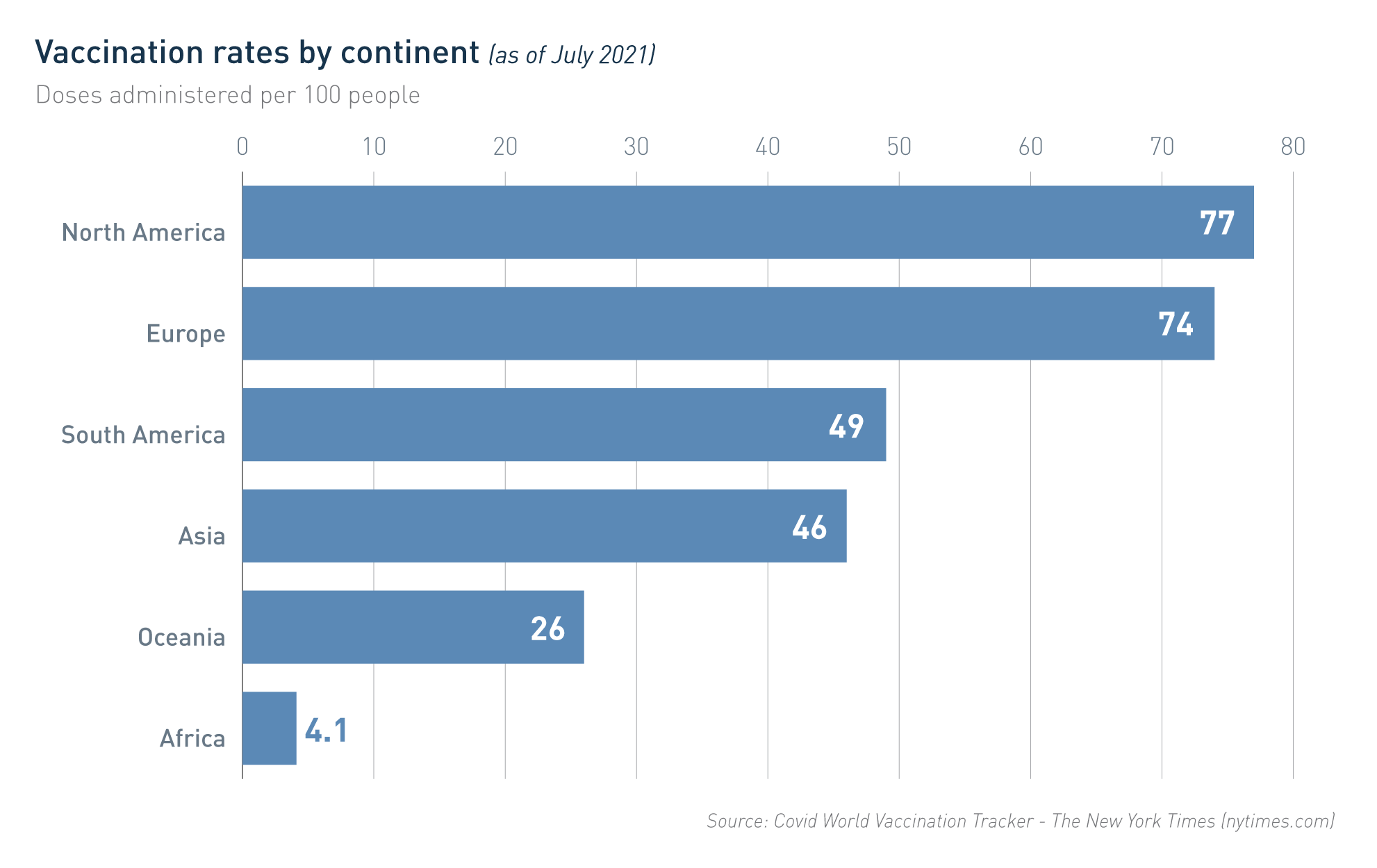Ah … remember the days before COVID? When the fear of catching a virus wasn’t always lingering in the back of our minds; when the term “social distancing” didn’t exist; when we didn’t obsessively wash our hands and use hand sanitizer? We’re all craving for things to get back to normal, and with more and more people getting the vaccine, it certainly seems like we’re heading in that direction. But how normal will things become? Will these new habits of ours — specifically, improved hand hygiene — fade away with paper towel demand continuing to drop?
In the peak of the pandemic, hand hygiene rates reached new heights. One study by Bradley Corporation showed that in April 2020, 78 percent of Americans washed their hands at least six times a day compared to around 37 percent before the pandemic. Adherence to hand hygiene practice in healthcare also skyrocketed; at the University of Chicago Medical Center, hand hygiene compliance among healthcare staff reached 100 percent in March 2020 compared to 55 percent before the pandemic. Indeed, this was good news to public health experts who have been campaigning for better hand hygiene for years.

Unfortunately, we haven’t kept it up. As we began to learn that COVID is spread primarily by droplets in the air instead of surfaces, the 78 percent of Americans who washed their hands frequently dropped to 57 percent in January 2021. And hand hygiene compliance at the University of Chicago Medical Center fell back to around 50 percent in August 2020. This caused the surge of paper towel demand to fall, with paper towel production returning to near pre-pandemic levels (RISI Fastmarkets, June Monthly Report).
Now that we are transitioning toward a state of normalcy (at least in North America and most parts of Europe), it seems like we could expect hand hygiene and paper towel demand to continue to decrease. While this is true in certain areas, it is not a simple story, and we are most likely not looking at a steady decline in hand hygiene and paper towel demand. This prediction is based on two important factors:
- The first is COVID. Will COVID continue to influence hand hygiene?
- The second has to do with viruses and germs besides COVID. Did the pandemic change people’s attitudes toward hand hygiene overall that may last in a post-COVID world?
Hand Hygiene During COVID
Overall, we can anticipate increased hand hygiene will continue due to COVID — among vaccinated and unvaccinated individuals — until herd immunity is reached. While this will mostly translate to increased demand for hand sanitizer, it will likely continue to fuel some demand for paper towels (for surface cleaning and hand washing).
When Solenis surveyed fully vaccinated friends and colleagues in the US about their current hand hygiene, most people said the same thing: their hand washing has definitely dropped off since getting vaccinated, but they still sometimes wash their hands when returning home and will try to use hand sanitizer after touching common surfaces.
Why continue when they’re fully vaccinated? One reason is that we’re still in a pandemic, and there are a lot of unknowns. As of July, less than half of the country has been vaccinated. We don’t know for sure how long the vaccine will stay effective, especially against variants, and we don’t know exactly how much the vaccines help in reducing transmission.
Of course, this is not to say everyone who has been vaccinated will continue with hand hygiene. As we have seen since the beginning of the pandemic, people behave differently when it comes to mask wearing — so we can expect a similar pattern with hand hygiene. But overall, there seems to be some sustained hand hygiene among those who are vaccinated.
For the half of Americans not fully vaccinated yet, we anticipate higher rates of hand hygiene among those who take the virus seriously. This may be offset by some Americans refusing the vaccine, estimated at 25 percent by recent polls. While there are multiple reasons people refuse the vaccine, such as not trusting its safety, one reason is not fearing the health consequences of COVID, which would make some less likely to practice hand hygiene.
In the rest of the world, we can expect a similar trend of continued hand hygiene, with rates higher or lower depending on the region’s situation with COVID and other factors. While vaccine hesitation is present worldwide, most other countries have less access to vaccines than the US, which would suggest hand hygiene would remain higher in many places.
As shown in the graph below, vaccination rates are extremely different across continents. Overall, North America and Europe have a similar percentage of their population vaccinated, and it’s estimated that herd immunity will be reached by the end of 2021 or early 2022 in both places (though vaccine refusal may push this back). In other regions, vaccination rates are much lower, and it is unclear when most will be fully vaccinated. Asia and South America only have between 10 to 15 percent of their populations fully vaccinated as of July. In Oceania, that number is 10 percent, and in Africa, most countries are below 1 percent.

How will these vaccination rates translate to paper towel demand? Lower vaccination rates suggest greater hand hygiene, which would suggest demand for paper towels. However, because paper towel demand varies widely across different regions, low vaccination rates won’t always correlate to high paper towel demand. For example, Africa’s extremely low vaccination rates may not have a notable impact on paper towel demand, as it represented only about 7 percent of global household paper sales in 2020. On the other hand, Asia accounted for roughly half of global household paper sales in 2020, so its low vaccination numbers will continue to have a significant impact on paper towel demand.

Hand Hygiene Post-COVID
When the world is truly past COVID, will increased hand hygiene go away? Maybe not. There is some evidence to show that people are now more aware and concerned about other germs besides COVID. Here are a few statistics:
- 88 percent of Americans believe they are extremely or somewhat likely to maintain their increased hand washing regimen once the virus has passed.
- 89 percent of Americans are now more conscious of germs than before the pandemic.
- A study from Ipsos reports that 68 percent of Americans will continue more frequent hand washing once the pandemic is over.
- 88 percent have changed their preference for touchless restroom fixtures “a great deal” or “somewhat” since the coronavirus outbreak.
This potential long-term trend towards better hand hygiene may contribute to not only at-home paper towel demand but also have an impact on the away-from-home paper towel market. The pandemic brought more focus on bathroom air dryers and their ability to spread more germs in the air compared to paper towels. While this finding was mostly relevant for the current pandemic, an increased long-term focus on germs and viruses in general could lead to greater preference for paper towels over air dryers.
Maybe once COVID is truly out of mind, things will go back to normal; in the past, hand hygiene has typically returned to normal after pandemics. But other pandemics weren’t COVID-19. And after frequent hand washing for almost a year during COVID, it’s not easy to return to old habits. If there is a silver lining from this pandemic, it could be that it would have people to be at least a little more conscious of their hand hygiene for the long term that might save lives in the future.